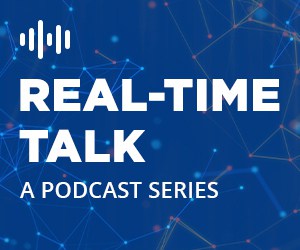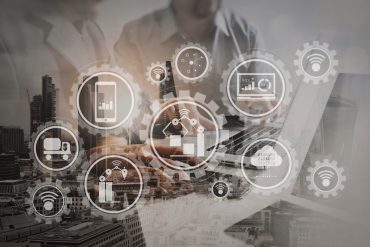
A discussion about electric vehicle design and production challenges and how automakers can leverage Digital Twins, simulations, and more to help.
Automakers face many engineering challenges as they bring electric vehicles (EVs) to market. Designing and producing such vehicles draws on many new domains that must all work together to meet customer demands and price points. All of this must be done in a world where speed to market is critical for success.
RTInsights recently sat down with Michael Severson, automotive industry marketer, and Piyush Karkare, Global Director for Automotive Solutions of Siemens, to talk about design and production challenges with EVs and how automakers can leverage Digital Twins, simulations, virtual commissioning, and more to help.
Here is a lightly edited version of our conversation.
RTInsights: What are the engineering challenges when automakers undertake the development and production of electric vehicles?
Karkare: When we talk about electric vehicles, in general, sometimes we make a mistake just talking about four-wheelers or cars, but there’s also a big market for two-wheelers. They’re also getting electrified. There’s a big market for electrified motorcycles and e-bicycles and whatnot. So, taking that as a whole, if you will, four-wheelers, two-wheelers, even three-wheelers, I think the main challenge is architecture.
How do these vehicles get architected? What kind of power consumption is going to be on that particular program or platform? How do you modularize it? How do you size the battery?
The battery management system then becomes a key thing. Battery health becomes another thing. All these things are controlled by the electrical architecture of the overall platform. That’s the biggest challenge automakers face.
Then, there are the repercussions of that with battery, battery integrations, and motors. A lot of OEMs and suppliers are almost re-engineering electric powertrains. There is a big market now for electric powertrains, which basically includes motors and transmissions.
Another challenge is weight reduction. This is getting highlighted because of the range anxiety aspect of EVs. “Hey, how do you maximize range?” But at the same time, it’s not just the range. How do you optimize range, comfort, and performance all together? It’s just not one at a time. If you think about three different knobs and you want to move them up and down to get the most optimum range and the most optimum comfort, and the performance of the vehicle.
Those things are the key challenges. But there are also issues with software. That plays a big role in that many EVs have advanced features for comfort and safety, including self-driven capabilities.
Severson: I would also add the challenge of reuse here. So, with reusing components on multiple platforms, it helps with efficiency, scale, and reducing costs. Cost is a key challenge for OEMs at this point. And their ability to reuse is key in that, as they transition from ICE to electric, their ability to reuse is limited. These vehicles require new architectures. The architecture they use on an ICE vehicle would not be optimal for an electric vehicle. However, as they get more vehicles in the portfolio that are electric, that reuse becomes easier,
Karkare: I talked about the development side of things. But you also mentioned the production aspect. Production, especially for new startups, is the biggest challenge. You might be able to design a new vehicle, but producing it is a whole other planet.
Within production, especially for the new startups, the issue is how much you automate on the factory floor and how much you keep manual. You have technologies like cobots and other things to help with automation. But you can only go so far with automation.
I remember one time two years ago, Elon Musk wanted to fully automate the production of Tesla vehicles. He did that, and then he had to revert back. If you look at other companies, like Rivian and Lucid Motors, these guys are looking at their production and how to improve it. It is more about how you do smart manufacturing. And when I say smart, it’s more about identifying what needs to remain manual, what needs to remain automated, and things like that.
RTInsights: What role can the use of Digital Twins play in the design phase of transformation?
Karkare: They are absolutely critical nowadays. Before, everyone built physical prototypes to validate, verify, and validate their designs. That’s not even viable anymore due to the costs. Those days are long gone.
Now, everybody is digitally transforming. Digital Twins play a key role where you can build concepts, identify the feasibility of those concepts, define your configurability, and baseline what you’re going to do. You can explore what kind of cameras you’re going to use, what kind of software you need to write, and all those things I think you need to prove out a design upfront. And it is all done virtually. That saves a ton of cost and a ton of rework downstream.
Once that is done, you can begin doing detailed engineering in respective domains, including mechanical, electrical, electronics, and software. Today. It is more like co-design, where all these domains collaborate. It’s not like you’re writing software and then seeing if the software can be executed on a chip. You basically do it together. You’re designing the chip at the same time you’re writing the software. And now, you are able to do those kinds of things virtually with Digital Twins.
And when we say Digital Twins, what we really mean is you able to virtually define what physically exists or what can physically exist. So, think about a vehicle or a motorcycle. Can you build it virtually and then verify and validate that virtually so that you can minimize, if not eliminate, the physical prototyping or physical testing? That is definitely the big push from the manufacturing industry overall and not just automotive.
Being able to explore early concepts and validate your concepts upfront reduces rework or cost later on.
Severson: Digital Twins also help accelerate collaboration between different domains. In particular, engineers in different domains can work on something much quicker in a virtual environment. They’re not limited by physical space.
Karkare: That’s a good point, Michael. I typically talk about three things that Digital Twins enable. One is collaboration, like you’re saying. Collaboration across all the different teams, suppliers, and whatnot. The second is traceability. So, what’s changing, what’s getting designed, who’s changing it, and more importantly, why something is changing?
And the third is reuse. Why do I have a part? What’s the function of it? Can I eliminate it? A lot of companies are now putting a lot of emphasis on the function of the part so that they can eliminate parts, not just re-engineer them, but totally eliminate them. The fewer parts, the better. Being able to reuse things results in fewer parts.
And when I say part, I’m not just talking about mechanical parts, I’m talking about everything. We’re talking about software, for example. When you’re calculating something mundane as vehicle speed, for example, there’s a function in software for vehicle speed. How many different algorithms can you build to calculate vehicle speed? You need one, right? So, back in the day, we had five or six different algorithms to calculate vehicle speed, and that was reduced to one. Then, if you had to change something, you change it once.
RTInsights: What role can the use of Digital Twins and other technologies like virtual commissioning play in optimizing production?
Karkare: These technologies play a massive role in production.
When you think about production, there is process planning happening as to what steps you’re going to take to build something. It could be as simple as two brackets getting assembled, or it could be as complex as the transmission getting assembled. So, what are the steps you’re going to take? And how do you define that process?
Once you do that, define that process; how do you verify that if you follow that process, you consistently build with quality the product that you’re trying to build? Then, you need to understand what kind of machinery you’re going to need to help with that whole process.
Next, you have to lay out the overall factory. What is the sequencing, and how are things going to move around? To be able to do that virtually is important. Now, we even have the Metaverse and things like that where we can actually go and walk around in the plant before it’s even built. I think that’s where you get the speed to the market, first-time quality, and the throughput that you need. You then are able to verify all of these things front with virtual commissioning and simulations on the factory floor.
For example, when you’re thinking about cobots, robots, and people working together in the same space, these robots are getting more self-aware. If there’s something around them, they stop. There’s no injury. All of these things are coming in, and technologies like Digital Twins and virtual commissioning are helping do it upfront.
And finally, using these technologies, you are able to actually build that production facility and then start producing, getting that first-time quality and the first-time flexibility that you need.
RTInsights: How does Siemens help in these areas?
Karkare: Siemens is in quite a unique situation now. A while ago, we used to focus on more mechanical things using things like PLM (Product Lifecycle Management). Now, we have technologies and capabilities across all the different engineering domains. That includes mechanical, electrical, electronics, software, and all the tools that the engineers need to work on these domains collaboratively.
We have all these tools now, all the domains, and a backbone, which is our Teamcenter backbone. And all of these tools are under a single umbrella called Xcelerator. This approach is unique in this market segment. No one else can even claim to come near us.
That’s definitely a big, big thing that customers are looking at. Customers using our Xcelerator portfolio have been able to accelerate their product development and production because these tools are under one umbrella. That inherently helps them get towards an integrated space where when someone does something on one side, the other side knows. They are able to do things like model-based engineering or model-based system engineering, virtual commissioning, and simulations.
Our simulation portfolio is enormous. Customers are able to do simulations from the get-go. They can explore a concept and carry their work through all the way to virtual and physical testing of the entire product. We have tools for that.
We have also embarked on an AI aspect to all of this where we use AI to help customers speed up, as well as understand what they’re doing, be able to predict what the users are trying to do and help them; be able to generate designs, be able to generate options, be able to generate designs that otherwise not possible. When you’re thinking about generative CAD and capabilities in edX, we can think about how to optimize multiple attributes together.
We also help with collaboration via virtual engineering across the globe. That’s where one engineer sitting in the U.S., another guy sitting somewhere in Europe, and another guy sitting somewhere in the Asia Pacific can all collaborate on the same design at the same time. That goes a long way in designing the right and building the right product at the quality that is needed and at the speed at which our customers are trying to compete.
Severson: Siemens provides a collaborative environment that allows different stakeholders to communicate efficiently and collaborate across the entire value chain from concept all the way to production. Siemens has the most comprehensive Digital Twins, with very robust design and optimization tools. That helps our customers design the best electric vehicles.
RTInsights: What are the results and benefits companies get working with you in these areas?
Karkare: Siemens not only provides the tools, but we have a partnership with our customers that helps them succeed. Whatever their challenges are, whether it’s building an efficient car that is lighter and cleaner or building an optimal digital factory, whatever the case, we are with them. We not only get them the right tools, but we also get them the right expertise. We keep that partnership going on until they succeed. That has been Siemens’ key DNA.
Severson: Our customers use our comprehensive set of tools to get vehicles to market quicker. With our advanced simulation, any errors in the design process are identified earlier rather than later. That reduces costs and results in fewer problems after the vehicle is released.







